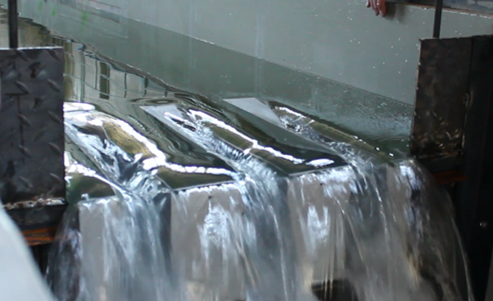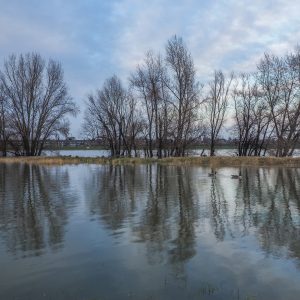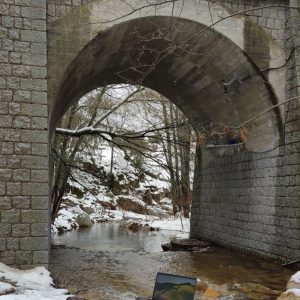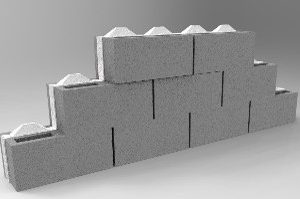Brief description of the solution and the added value it delivers
Sluice gate for controlling flows from dam spillways, providing increased capacity in normal operation thanks to its labyrinth profile, as well as extraordinary discharge capacity, where necessary, by automatically retracting in the event that the water level in the reservoir exceeds an established safety level.
As it is recoverable, it avoids the problems of existing commercial solutions vis-à-vis the high cost of replacement in the event of operation in extreme situations, as well as rapid changes in water flow downstream and the risk of damage due to impacts from detached sluice gates.
Description of the technological basis
The POLILAB solution increases the drainage capacity of dam spillways which, either due to their age or changes in the water level regimes of their rivers, are unable to withstand the freshets they are currently designed to handle.
POLILAB is an improvement on the traditional design of fuse gates, which under normal conditions increases the discharge capacity per linear metre thanks to its labyrinth design and, when necessary, automatically retracts to allow freshets that could jeopardise the integrity of the dam to be discharged safely.
As it does not become detached, like existing solutions, the sluice gate does not cause damage downstream and can be recovered simply, avoiding further expenditure.
‘It increases the drainage capacity of existing spillways by means of fuse gates that can be recovered simply, avoiding further expenditure.’
Business needs / application
Safety
-
Where a spillway lacks the capacity to deal with the rises in river levels that it should be able to handle in order to comply with the required safety standards, it could put at risk the integrity of the dam it serves. The structural failure of a dam can have catastrophic consequences, depending on the potential risk involved. Thus, in the case of dams which, following the relevant safety review, are found to lack the capacity to withstand the freshets they are designed to handle, measures must be taken to mitigate the associated risk. One means of doing so is to increase the discharge capacity of their spillways.
Energy
-
Changes in the streamflow regimes of rivers as a result of climate change, as well as the rise in energy needs, require an increase in the regulation capacities of reservoirs associated with hydroelectric power stations. Maintaining the freeboard implies the need to increase the discharge capacity per linear metre of the spillway, so that an increase in the normal operating level can be accommodated without compromising safety. To that end, one option is to modify the discharge profile, expanding it with the use of labyrinths or piano keys.
-
This would also be applicable to an increase in irrigation and water supply requirements.
‘The discharge capacity of some spillways is insufficient to handle river level regimes altered by climate change, with safety requirements higher than those used in their design’
Competitive advantages
The advantages offered by POLILAB compared to its direct competition, namely existing commercial solutions involving labyrinth-type fuse gates, are as follows:
-
As it is recoverable, no significant expenditure needs to be incurred to replace it following its use in extreme freshet conditions.
-
Its retraction speed is expected to be adjustable, such that sudden and severe increases in flow volume downstream can be avoided.
-
As it does not become detached from the main structure, it does not involve any risk as a result of impacts downstream.
References
The team involved in the development of the POLILAB solution is made up of a multidisciplinary group of individuals with extensive experience and wide recognition in their respective fields: Technological knowledge (SERPA UPM), knowledge of the dam planning and construction sector (JGICSA), knowledge of and skill in complex numerical calculations (CIMNE), experience and resources in small-scale testing (CEDEX) and experience in the metals industry (VEMSA).
Stage of development
-
Concept
-
Research
-
Lab prototype
-
Industrial prototype
-
Production
Contact
POLILAB contact
Miguel Ángel Toledo Municio, Francisco Javier Caballero Jiménez, Miguel Ángel Fernández Centeno
ETSI Caminos, Canales y Puertos – UPM
e:
e:
e:
UPM contact
Innovation and Entrepreneurship Programmes
Technological Innovation Support Centre (CAIT) – UPM
e:















